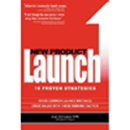
I can’t help but get a kick out of those rodents dressed in gangsta garb, trying to sell cars that look like rolling toasters (check out the Kia Motors “Hamster Rap” commercial on YouTube). What they are seemingly trying to do is show us the huge advantage of buying one company’s shoebox on wheels over the competition’s. Whether you buy theKia Soulor theScion xB, when all is said and done, they both stack nicely in the junkyard.
The point of the commercial is that when you are looking to buy something new, there are always choices, and often, the choices look alike and act similar. In the baking industry, we face the same dilemma. When it comes time to purchase a new oven or a mixer, there are several options, and while they look nearly the same from a distance and may deliver similar results, the supplier always believes that theirs is better than the others.
When faced with decisions on how to choose which machine or system you are going with, there are a lot of factors to consider that aren’t visible to the naked eye.
For starters, when considering the purchase of a major capital item, you need to get a feel from peers in the industry as to how the supplier has performed in the past. Although this is important, it is not a tell-all to how your experience will be. Ask around to get the pros and cons. Reputation goes a long way, so make sure you take every opportunity to learn as much as you can before making that first call for a quote.
Next, find out how long the supplier has been serving the specific industry. Longevity doesn’t always lead to the best fit, but it does provide assurance on how the provider services its customers and applications. The supplier may have been around selling machinery for the mixing room forever and suddenly, they come up with something for packaging. Their top reputation in mixing might not carry them in the new selling space right away.
Additionally, you need to consider your own personal experience with the company. Your experience may have been in a past season of your career, but reach into your own memory and weigh your own set of pros and cons, all before making that first call.
If you are considering a brand new supplier to the marketplace, you have your work cut out for you. I’m not suggesting that you stay away from new providers, but evaluating them may be more difficult to accomplish before making the call.
Once you are ready to deal with the supplier, make a point to meet their people. I have a lot of industry friends that sell equipment, but when I start the conversation, I like to dig a little deeper into the organization. Chats with the engineers, the parts peope and the service folks can be some of the most beneficial time spent when considering their wares. The sales people will provide the outline and the specifications and even help apply the right machine to the task, but the guys behind the scenes will say what they deal with and how they feel about the key features of the machine. They say that most successful design modifications to equipment come from the field, so why not get some feedback from the folks “behind the scenes” before moving forward?
Finally, discuss the features of the machine or system in detail so that both parties know what you need and what they can deliver. Clear expectations are the key to figuring out the correct price.
Car dealers talk about the “service after the sale.” In our business, we need to be conscientious of the service before the sale, especially when dealing with a quarter-million-dollar order. Timely responses to questions, quick turnarounds on quote adjustments and providing answers before you ask the questions are all signs of good things to come. And, if the supplier is willing to get you out to other customer’s facilities so you can see their gear in action and talk to the user, and they can service you with qualified technicians, readily available repair parts and a quick reaction to warranty claims, you can’t ask for much more than that.
The final frontier in a deal like this is the delivery schedule and terms. If delivery is promised to be timely and payment terms are fair to you, the end of the conversation becomes the negotiated price.
If you use this process to evaluate your deal, you’ll never have to worry about getting shanked by a giant rat.



